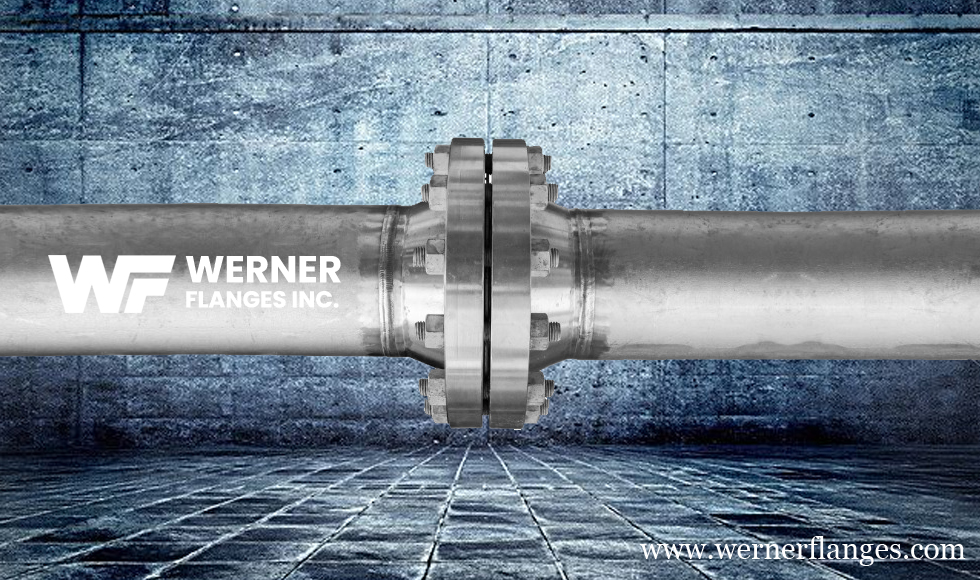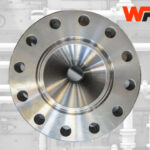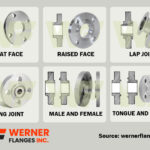In the industrial sector, proper pipe flange installation isn’t just about following procedures—it’s about protecting your bottom line. Even minor mistakes can lead to costly leaks, unplanned downtime, and premature system failures. For facilities managers, maintenance teams, and procurement specialists, understanding these common pitfalls is essential for maintaining operational efficiency.
At Werner Flanges Inc., we specialize in manufacturing and exporting pipe flanges worldwide. With our extensive experience in the industry, we have identified some of the most common mistakes made during pipe flange installation, which we outline below. Let’s dig into the five most critical pipe flange installation errors and provide practical solutions to help you avoid them.
1. Improper Bolt Torquing Sequence and Values
The Problem: Many technicians either overtighten bolts (causing flange distortion and gasket crushing) or follow an incorrect tightening sequence, creating uneven pressure distribution.
The Cost: Improper torquing leads to immediate leaks or premature gasket failure, resulting in product loss, environmental hazards, and emergency maintenance. A single significant leak can cost thousands in lost product, cleanup, and regulatory fines.
The Solution: Always follow a cross-pattern tightening sequence, gradually increasing torque in multiple passes until reaching the manufacturer’s specified value. Invest in calibrated torque wrenches and provide clear torque charts at installation sites. For critical applications, consider ultrasonic bolt tensioning tools that provide precise measurements.
2. Mismatched Flange Ratings and Materials
The Problem: Using flanges with incompatible pressure ratings or materials that don’t match the service conditions is surprisingly common, especially during emergency repairs or modification projects.
The Cost: Beyond immediate leaks, mismatched flanges can lead to accelerated corrosion, stress cracking, and catastrophic failures. The resulting emergency repairs often cost 3-5 times more than planned maintenance.
The Solution: Implement a thorough material verification program that includes proper documentation and physical checking of flange markings before installation. Train teams to understand pressure-temperature ratings and maintain an up-to-date piping specification system that clearly identifies required materials for each service.
3. Inadequate Gasket Selection and Preparation
The Problem: Using the wrong gasket material for the application or improperly handling gaskets during installation compromises the entire flange connection.
The Cost: Gasket failures account for nearly 70% of all flange leaks. While a quality gasket might cost $50-100 more than a cheaper alternative, a single failure can cost tens of thousands in downtime and repairs.
The Solution: Select gaskets based on temperature, pressure, and chemical compatibility—not just cost. Store gaskets properly to prevent deformation and contamination. Never reuse gaskets, and ensure proper cleaning of flange faces before installation. Consider standardizing on a high-performance gasket material for critical applications rather than using multiple types.
4. Flange Face Damage and Improper Cleaning
The Problem: Scratched, corroded, or contaminated flange faces prevent proper gasket seating, creating leak paths even with correct torquing.
The Cost: Surface preparation issues typically add 20-30% to maintenance costs through repeated work and shortened service intervals. A connection that fails shortly after installation often requires complete replacement of components that could otherwise have lasted years.
The Solution: Inspect all flange faces thoroughly before installation. Use proper tools (non-metallic scrapers, approved cleaning solvents) to clean surfaces without causing damage. Protect flange faces during storage and handling with purpose-made flange protectors. For damaged faces, consider on-site machining services rather than installing on compromised surfaces.
5. Misalignment and Improper Support
The Problem: Forcing misaligned flanges together creates residual stress that eventually leads to failures. Similarly, inadequate pipe support near flanges places excessive loads on the connection.
The Cost: Alignment issues increase installation time by up to 50% and reduce connection lifespan by as much as 70%. The resulting strain on equipment can also damage expensive pumps, valves, and other components.
The Solution: Use proper alignment tools during installation rather than forcing connections. Verify pipe support systems are properly designed and installed near flange connections. For critical equipment, perform stress analysis to ensure the piping system isn’t transferring excessive loads to flanged connections.
Conclusion: The Value of Getting It Right
While proper flange installation may require more time and attention initially, the investment pays significant dividends through extended system life, reduced maintenance costs, and improved operational reliability. A systematic approach to flange management—including proper training, documentation, and quality control—typically reduces total maintenance costs by 15-20% while extending asset life.
For more information on selecting the right industrial pipe flanges for your specific applications, check out our comprehensive product guide and installation resources.
Are you experiencing challenges with your industrial piping systems? Share your experiences to us, or contact our technical team for personalized assistance with your specific application needs. You can alway reach out to us for piping flanges requirement.



